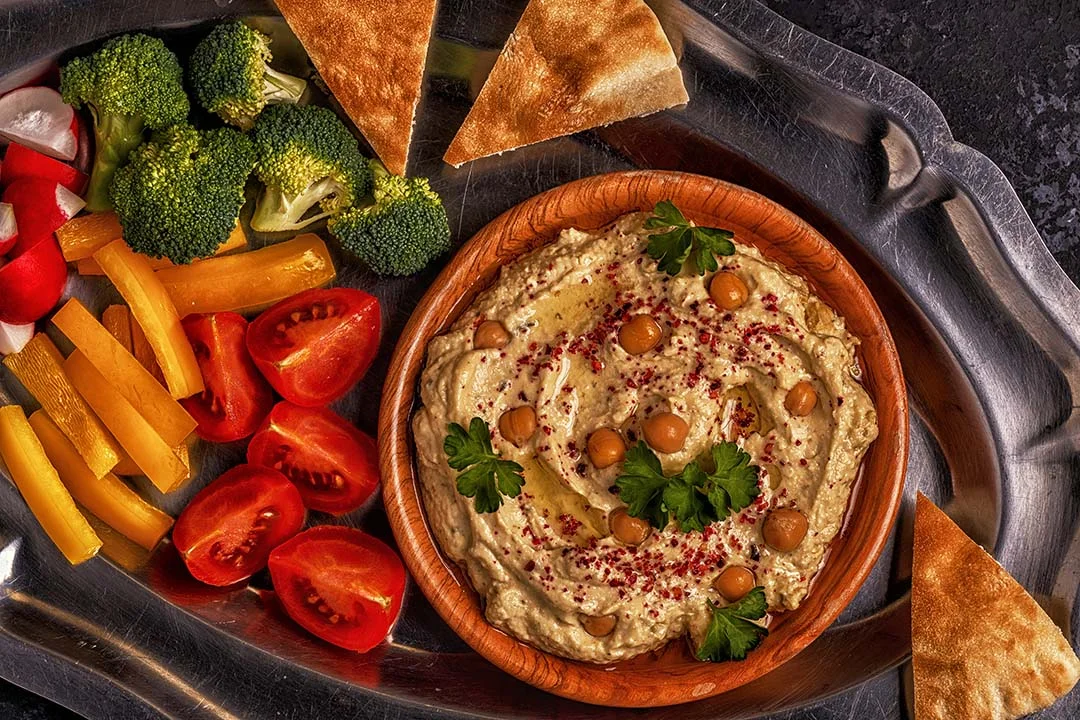FODMAPs Might Be The Culprit…
What do apples, onions, hummus and ice cream have in common?
They’re all rich in FODMAPs: a set of carbohydrates that may trigger the symptoms of Irritable Bowel Syndrome (IBS): bloating, gas, cramping, constipation or diarrhea.
FODMAP is the acronym for a set of carbohydrates found in milk (lactose), beans, legumes and grains, fruits and veggies and of course, most refined and processed food. (FODMAP stands for “Fermentable Oligosaccharides, Disaccharides, Monosaccharides And Polyols”).
If you’re among the 60 million Americans suffering from heartburn, IBS or IBD (Inflammatory Bowel Disease), then study this list of FODMAPs foods in detail to discover if FODMAPs are a factor in your indigestion.
These plant fibers and sugars do double-duty: they are fuel for our bodies and they feed the good bacteria that live in our intestines.
As a way of saying “thank you” for lunch, our gut microbes ferment these fibers into “short chain fatty acids” (like butyric acid), the primary fuel for the “inner skin” cells that line our intestinal tract. This is a symbiotic relationship…a win-win deal!
But some of these microbes produce too much gas in the process of fermentation; gas that expands and stretches the nerves that line our intestines, creating that painful cramping sensation we experience as heartburn or irritable bowels. Leaky gut and malabsorption can follow.
While fruits, vegetables and beans are packed with fiber, vitamins, minerals and phytonutrients, it is their unique carbohydrate profile that may aggravate indigestion and promote bacterial overgrowth.
This is especially true if the bacteria that belong in the large intestine have migrated upstream to overgrow in the small intestine, creating Small Intestinal Bacterial Overgrowth.
So if you suffer from gas, bloating, cramping or abnormal bowel movements, then your task is to discover which of these foods might trigger symptoms in YOU! Everyone is unique. What is fine for your best friend might make you miserable.
Take a moment to print out the FODMAP chart below and circle your favorite foods in the red category (high FODMAPs). If you eat them frequently, then eliminate these potential culprits completely for 2-6 weeks and look for an improvement in digestion.
You may find that you can tolerate some of the FODMAPS, but can handle little to none of others without discomfort.
Now a word of caution is in order: These fiber and phytonutrient-rich vegetables and fruits are among the most nutritious, so completing skipping them is not the answer.
Evidence is emerging that long-term elimination of the entire list of FODMAP foods reduces the diversity and health of the microbial communities inside us. We need the nutrients, fiber and phytonutrients these foods provide to keep our bodies healthy.
A brief (2-6 week) elimination process should be sufficient to determine which FODMAPs trigger your indigestion.
There are many versions of the FODMAP diet, with some foods on some lists and not on others. It can be challenging. Working with a practitioner experienced in dealing with the many dietary and lifestyle contributors to IBS, SIBO and IBD should expedite resolution of this common problem.
I’ve been working with these protocols for several years and have helped many people turn their IBS around! For more information or to schedule an appointment with me, check out my work at the Marin Natural Medicine Clinic.
My mission is to feed you healthy recipes and tasty bites of power-packed information. Let me know if you enjoy this recipe and post by liking or commenting below. A santé! (To health)!
If you have friends or family who need this information,
please subscribe BELOW to receive my weekly post and share them widely!

